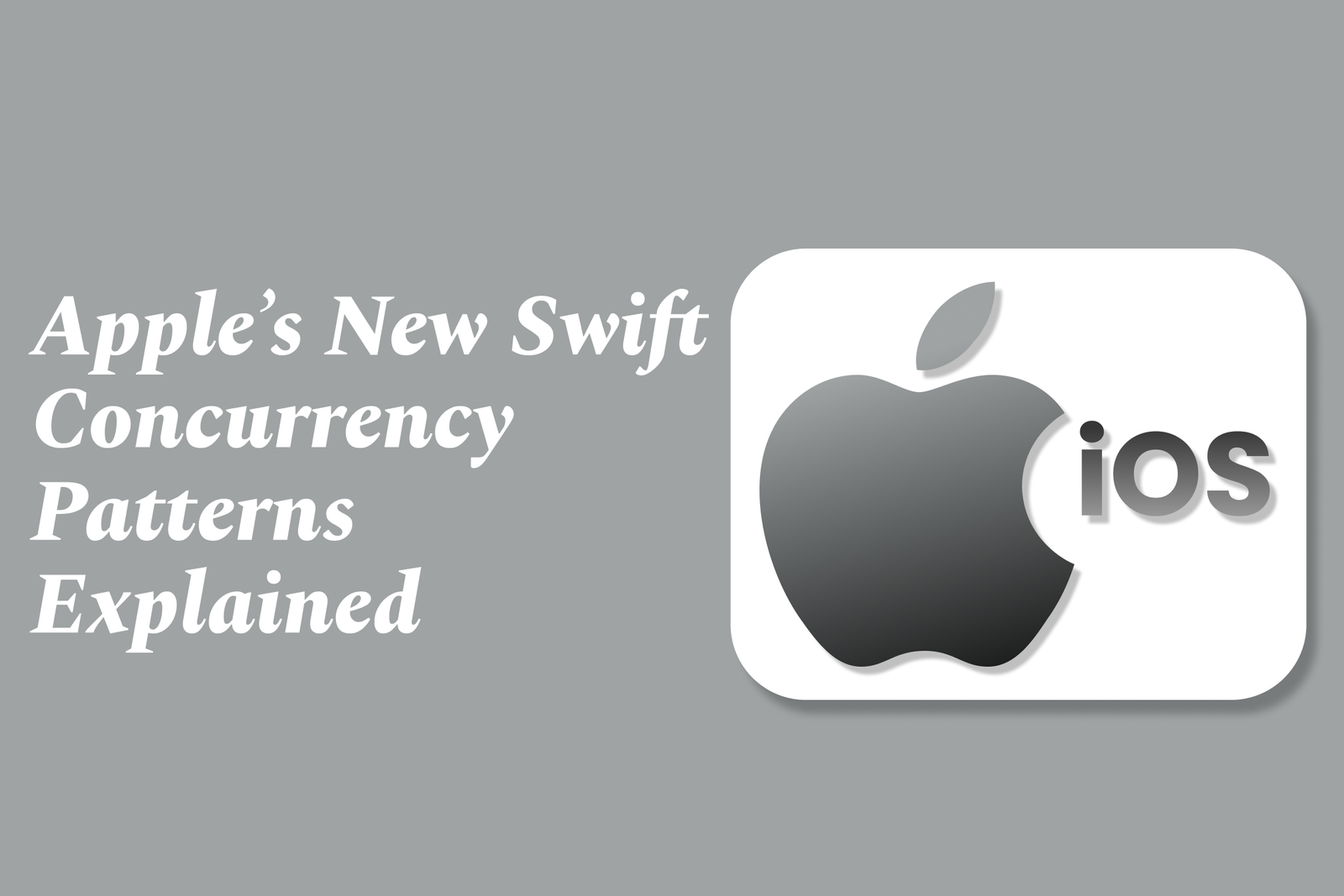Apple?S New Swift Concurrency Patterns Explained
Apple’s new Swift concurrency patterns introduce async/await syntax and actors, enabling safer, clearer asynchronous code. They simplify concurrency by managing thread safety and shared state, making Swift code more readable and less error-prone compared to traditional GCD-based approaches.
Apple?s New Swift Concurrency Patterns Explained
1 ) Introduction to Swift Concurrency
Apple introduced new concurrency features in Swift aimed at making asynchronous programming more readable, maintainable, and clear. Core to this is the async/await syntax enabling asynchronous code to resemble synchronous, sequential code.
2 ) Benefits of Async/Await in Swift
Improved readability and compactness of asynchronous code.
Helps avoid complex callback patterns and nested closures, common with older concurrency models like Grand Central Dispatch (GCD).
Facilitates writing concurrent and parallel tasks cleanly.
3 ) Comparing Async/Await with Grand Central Dispatch (GCD)
Both provide support for parallelism and asynchronous execution.
Async/await expresses concurrency through language level constructs making code easier to follow.
GCD relies on closures and dispatch queues, often leading to more verbose and harder to read code.
4 ) Understanding Actors and Data Safety
Swift introduces actors to manage mutable shared state safely in concurrent environments.
Actors serialize access to their internal state, preventing data races.
However, actors can complicate code when accessed from non concurrency contexts.
5 ) Challenges with Singletons and Shared State
Traditional singletons with global mutable state risk data races under strict concurrency checking.
Marking shared state as @MainActor serializes access on the main thread, increasing safety but requiring careful async usage.
The combination of @Observable and actor isolation is complex since you cannot yet mark actors as @Observable, which complicates integration with SwiftUI views.
6 ) Practical Usage and Pitfalls
Methods accessing actor isolated or @MainActor state often require async/await and annotations on the calling context.
Developers must manage which parts of their code run on which actor or thread and deal with concurrency annotations appropriately.
Task creation with @MainActor is thread safe and can be used to update UI related shared state safely.
7 ) Community Insights and Best Practices
It is advisable to keep concurrency definitions at higher architectural layers.
Business logic layers can remain mostly synchronous while concurrency is handled at top level boundaries.
Using actors or @MainActor annotations enhances predictability and thread safety, reducing boilerplate compared to manual dispatch queues.
Swift concurrency flips the decision of where code runs from callers managing dispatch queues to callees indicating their execution context via async or actor isolation.
8 ) Summary
Apple’s new Swift concurrency patterns provide powerful tools like async/await and actors to write safe, clean, and maintainable concurrent code. While the new model simplifies many aspects of concurrency compared to GCD, developers must understand actor isolation, global actors like @MainActor, and how to structure their code with these in mind to avoid pitfalls such as data races and complex thread management.
https://justacademy.in/news-detail/trending-flutter-plugins-in-2025
https://justacademy.in/news-detail/ios-19-widget-enhancements-you-can?t-ignore
https://justacademy.in/news-detail/swiftlint-updates-for-cleaner-code-in-2025
https://justacademy.in/news-detail/how-react-native-helps-build-high-performance-apps
https://justacademy.in/news-detail/trends-in-cross-platform-development-2025
Related Posts
Java supports GDPR and data privacy by enabling secure data handling through encryption, controlled access, and precise data management. It allows developers to minimize PII exposure, ensure data confidentiality, and design workflows that comply with data protection regulations effectively.
Java code quality tools have evolved to include advanced static analysis, integrated security checks, and AI-powered code reviews. These updates help developers detect bugs, enforce coding standards, and enhance security, streamlining the development process and improving overall code reliability.
Java remains a cornerstone in big tech companies, evolving with modern features like records, pattern matching, and virtual threads. Its robust ecosystem, enhanced performance, and growing AI integrations keep it vital for both legacy systems and innovative new projects.
Java and CI/CD pipeline optimizations streamline Java application development by automating builds, tests, and deployments. They improve efficiency through parallelization, caching, and secure secrets management, enabling faster feedback loops and more reliable, scalable software delivery.
Java supports modern cryptography standards through its flexible Java Cryptography Architecture (JCA), enabling integration of advanced algorithms like AES, EdDSA, and post-quantum tools. Libraries like Bouncy Castle offer FIPS-certified, hardware-accelerated implementations for secure development.
Java 23 enhances record patterns by enabling concise, direct destructuring of record components within pattern matching, simplifying type checks and data extraction. This improvement boosts code readability and expressiveness by reducing boilerplate in handling immutable data classes.
Java remains a top choice for mobile app backends, powering scalable, secure, and high-performance server-side solutions. Latest trends include cloud-native microservices, reactive programming, and enhanced JVM optimizations, enabling efficient, flexible, and robust mobile backend development.
Java SE 24 and LTS Java SE 21 offer enhanced features and performance, while Apache Spark 4.0.0 introduces Scala 2.13 support and advanced ML and SQL capabilities. Together, they empower developers to build scalable, high-performance data applications with modern tools.
JUnit 5 modernizes Java testing with a modular architecture, improved assertions, and seamless Java 8+ support. Beyond JUnit, tools like Mockito and AssertJ enhance mocking and assertions, creating a powerful, flexible ecosystem for writing clean, efficient Java unit tests.
Java plays a pivotal role in cloud automation tools by providing a robust, platform-independent language used to build scalable automation frameworks like Jenkins and Selenium, enabling efficient CI/CD pipelines, testing, and orchestration across diverse cloud environments.










